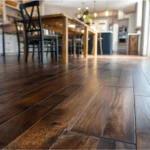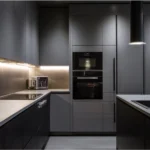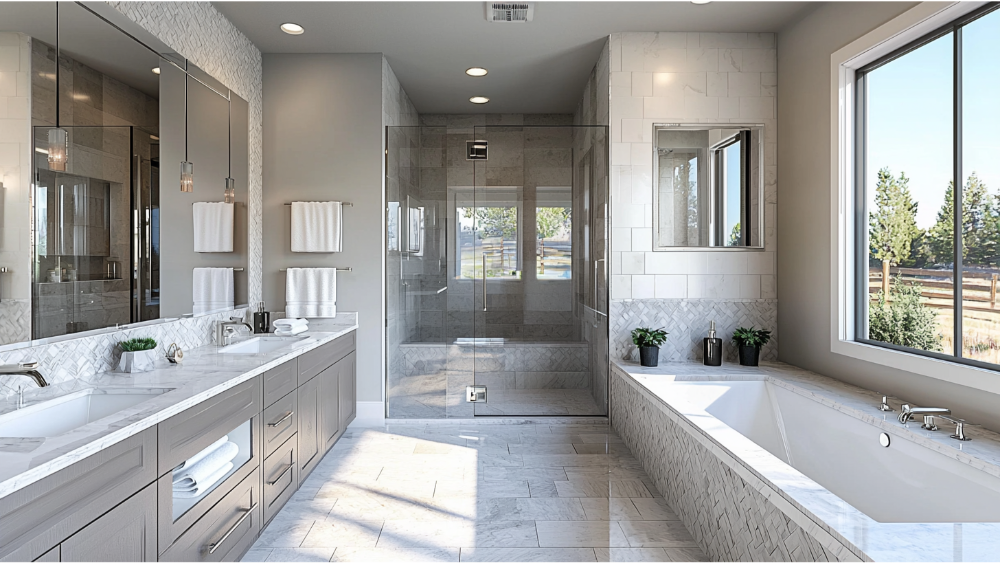
Heated Bathroom Floors Are Trending in 2025
The Spa Bathroom Movement
In 2025, homeowners are no longer settling for basic bathrooms. They’re creating personal retreats that bring comfort and wellness to daily routines. Heated bathroom floors are leading the charge. Whether you’re stepping out of the shower in the morning or winding down at night, having a warm surface under your feet turns the space into a real sanctuary.
This spa-like comfort isn’t just about indulgence, it’s about creating a home that supports your lifestyle. Adding underfloor heating to a tile floor not only warms the space but also the whole room. A bathroom with a heated floor feels inviting all year round, it’s the kind of luxury that’s becoming standard in modern renovations.
Smart Homes Start in the Bathroom
Today’s smart home technology starts with comfort and control. With a floor heating system connected to a Wi-Fi thermostat, you can set schedules, monitor energy usage and fine tune your heating preferences from your phone or smart speaker. This is convenience taken to a whole new level, no more guessing or waiting for floors to warm up. Instead your bathroom adapts to you.
Plus the energy efficient nature of radiant heat means you’re not just adding comfort you’re reducing waste. Rather than heating the whole house just to warm one room, these systems allow zoned heating that saves energy and performs better.
Understanding Your Bathroom Floor Heating System Options
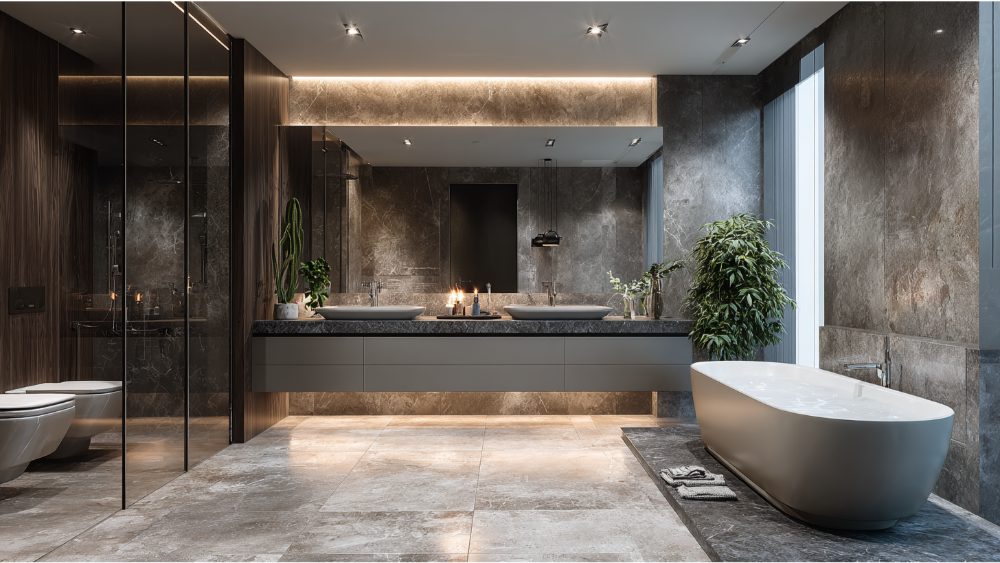
Electric Floor Heating Systems
Electric radiant systems are ideal for most bathroom remodels. These systems use a heating cable embedded in a mat or manually spaced over the subfloor. The cables are then installed beneath the finished tile floor, delivering fast, uniform heat. Unlike radiators or vent-based systems that push warm air through the room, an electric underfloor heating system radiates warmth upward from the surface, creating a cozy environment with no cold spots.
These systems are especially suited to bathrooms because of their ease of installation and rapid warm-up time. Paired with a programmable thermostat, they allow for full control over temperature and timing, helping homeowners maintain comfort while minimizing electricity use.
Installation typically involves laying the heating cable over an uncoupling membrane, then embedding it with thinset directly beneath your tile. This method ensures durability and prevents cracks in the tile or grout from subfloor movement, two essential elements for long-term performance.
Hydronic Floor Heating Systems
Hydronic systems use heated water pumped through flexible tubing beneath the surface of the floor. While more complex to install, they offer excellent energy efficiency and are often connected to a boiler system. These systems are best for new construction or whole-house heating projects, where their lower operating cost over time can be a smart investment.
Because hydronic systems require access to plumbing, they may not be suitable for smaller renovations or tight retrofits. However, in larger rooms or homes with existing boiler systems, hydronic heating offers a high-performance, eco-friendly alternative to forced air or wall-mounted radiators.
What’s the Best System for Your Bathroom?
There’s no one-size-fits-all answer, each home and project has unique requirements. Electric floor heating is generally the best system for bathroom remodels due to its flexibility, speed, and cost-effectiveness. Hydronic systems are better suited for larger spaces or whole-home integrations, especially when paired with other radiant zones.
At America’s Advantage Remodeling, we assess your goals, layout, and existing infrastructure to recommend the system that’s most suitable for your needs. Whether your space has a concrete substrate or a wood subfloor, we ensure the right materials and installation techniques are used for lasting comfort and performance.
Best Flooring Materials for Radiant Heating
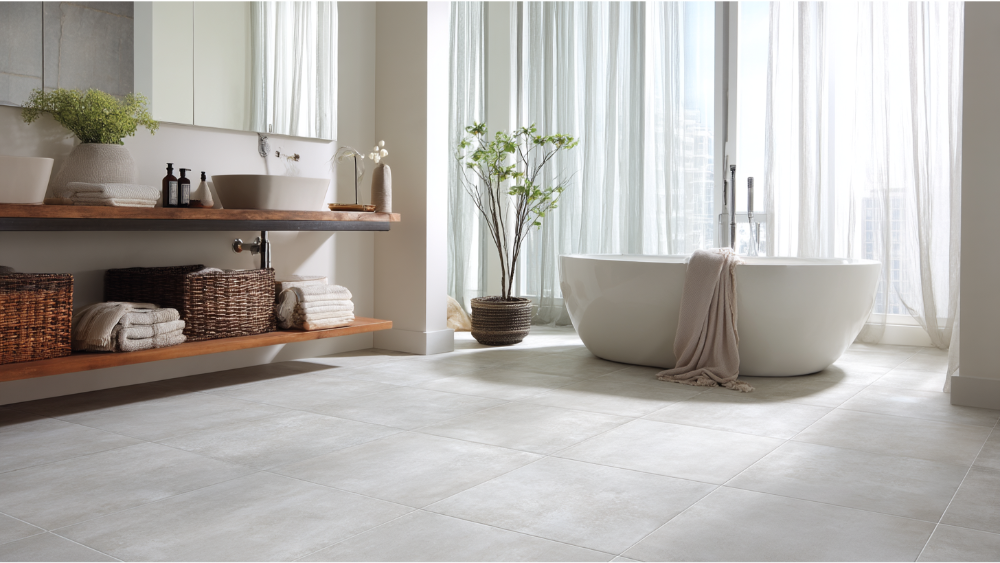
Materials That Maximize Comfort
Choosing the right flooring material is essential to get the most from your heated bathroom floor. Some materials conduct heat better than others, which directly affects how quickly your floor warms up and how evenly the heat is distributed across the room.
- Porcelain or Ceramic Tile: These are the top choices. They conduct heat efficiently, are moisture-resistant, and are extremely durable, making them perfect for any bathroom environment.
- Luxury Vinyl Tile (LVT): A more budget-friendly option that still works well with electric radiant systems if rated appropriately.
- Engineered Hardwood: More stable than solid wood and compatible with radiant heating if installed correctly.
- Laminate: Many modern laminates are safe for radiant heating and offer good performance with proper underlayment.
- Low-Pile Carpet with Underlayment: This option can work with radiant heating but requires careful planning to avoid insulation issues.
What to Avoid Over Your Heated Floor System
Avoid materials that insulate heat or are sensitive to temperature changes. High-pile carpet, certain types of wood, and thick rugs can interfere with heat transfer or warp over time. Natural stone can be suitable, but it requires more energy to warm up, so it’s important to pair it with a properly insulated system.
When in doubt, our team will walk you through your options during the tile installation planning phase, ensuring the materials selected match the demands of your underfloor heating system.
Heated Floors Over Concrete Substrates

Preparing Concrete for Floor Heating Systems
Bathrooms built on concrete slabs or basement levels require special attention. Concrete naturally pulls heat away from the surface, which can reduce system efficiency if not properly addressed. That’s why installing insulation boards beneath the heating cable is so important, it prevents heat loss and ensures your system delivers fast, consistent warmth.
We also apply leveling compounds to ensure a flat, secure base for the uncoupling membrane and cable layout. This preparation makes it easier to install tile and ensures your system is protected from moisture and cracking.
Installation Best Practices for Concrete Subfloors
Our best practices for concrete include:
- Placing insulation boards beneath the heating elements
- Installing a vapor barrier or waterproofing membrane
- Embedding the heating cable in a layer of thinset directly onto the substrate
- Using an uncoupling membrane to reduce tile stress and allow for natural expansion and contraction
This detailed prep work guarantees even heating, long-term reliability, and beautiful flooring finishes every time.
Costs: Installation and Energy Efficiency
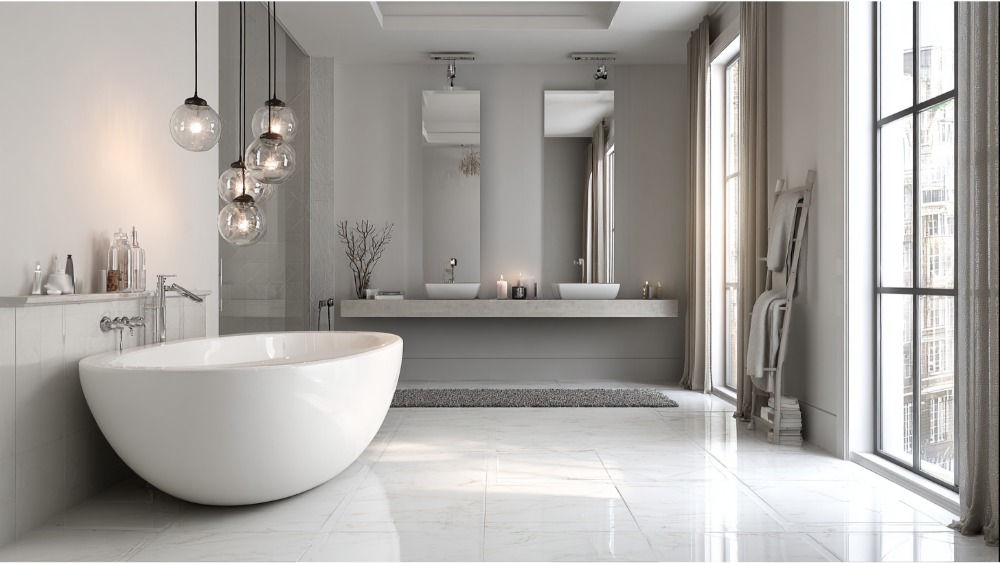
What You’ll Spend on a Heated Bathroom Floor in 2025
Electric systems generally cost $8 to $15 per square foot, while hydronic systems can range from $15 to $25+ per square foot. These estimates depend on room size, substrate condition, and flooring material.
Additional expenses to consider include:
- Subfloor leveling and prep
- Grout and tile materials
- Electrical or plumbing upgrades
- Smart thermostat programming
- Access panel installation for boiler systems (in hydronic setups)
We provide clear, upfront quotes so you understand every element of your remodel before we begin.
Monthly Energy Costs and Long-Term Savings
Radiant systems are known for their energy efficiency. Because they heat the surface directly rather than circulating warm air, they require lower operating temperatures and use energy more effectively. For a typical bathroom, monthly electricity costs can be as low as a few dollars, especially when paired with energy-efficient thermostats.
In the long run, the system pays for itself by reducing dependence on central HVAC systems and maintaining more stable room temperatures.
More Than Just Comfort: Why Homeowners Love Heated Floors
Cleaner Air, Less Mold, and Allergy Relief
Radiant heating doesn’t rely on fans or vents, which keeps dust, pet dander, and allergens out of the air. A drier, consistently heated surface also discourages mold and mildew, especially in damp spaces like bathrooms. It’s a healthier way to heat your home without compromising comfort.
Set It and Forget It
Heated floors are low-maintenance and long-lasting. With no moving parts, electric systems can last over two decades with minimal attention. You’ll never have to bleed radiators, clean vents, or worry about uneven heating again. Just reliable, even warmth where you need it most.
A Valuable Upgrade for Resale
Buyers today are looking for thoughtful, comfort-driven upgrades. A bathroom with radiant underfloor heating and a high-quality tile installation gives your home a serious edge on the market. It’s one of the most impactful investments you can make to increase resale value and attract attention.
What to Expect During the Installation Process
How Long?
Most bathrooms take 2-4 days to install and can be done as part of a larger remodel or as a standalone project. The process involves:
- Removing old flooring and prepping the subfloor
- Installing insulation, membranes and heating cable
- Applying thinset and laying the tile floor
- Connecting the thermostat and testing the system
We handle everything for you from start to finish.
Why Choosing the Right Installer Matters
Bad installation can cause cold spots, electrical issues or damage to your new floor. That’s why we focus on precision at every step – from laying cable evenly to securing waterproof membranes and full code compliance. As local experts in the Puget Sound area we know what it takes to install a system that will perform beautifully for years to come.
The Benefits of Radiant Floors in Modern Bathroom Design
Radiant floor heating systems have become a staple in high-end and energy-conscious bathroom remodels. Unlike forced air systems that heat the air unevenly, radiant floors heat the surface from the ground up, creating a consistent, cozy environment throughout the room.
One of the major benefits of radiant floors is their ability to maintain uniform heat without relying on vents, fans, or wall-mounted radiators. The warmth gently radiates through the tile floor, keeping the surface comfortable underfoot, even on the coldest mornings.
These systems are also incredibly versatile. Whether you’re working with a concrete slab or a wood subfloor, radiant floor heating systems can be adapted to suit the space. They pair beautifully with a wide range of materials, from stone to porcelain, and work exceptionally well beneath durable tile installations.
Beyond comfort, radiant floors offer efficiency. Because they operate at lower temperatures than traditional systems and don’t waste energy heating unused air space, they’re much more energy efficient. When connected to a programmable thermostat, they become even more cost-effective, especially in rooms like bathrooms where zoning makes a big impact.
For homeowners looking to bring their bathroom remodel to a whole new level, radiant floors are one of the smartest and most satisfying upgrades you can make. They’re suitable for everyday living, easy to maintain, and deliver benefits you’ll feel every single day. Your feet, your energy bill, and the rest of your home will thank you.
Frequently Asked Heated Bathroom Floor Questions
How long do heated bathroom floors last?
Electric systems can last 20+ years, and hydronic setups often exceed 30 years with proper maintenance.
Are heated floors safe in wet areas like showers?
Yes, when installed with GFCI protection and waterproofing, they are perfectly safe and reliable.
Can heated floors be installed over existing tile?
Sometimes, but typically we recommend removal to avoid height issues and ensure proper insulation.
Will radiant floors heat the entire room?
In smaller bathrooms, yes. In larger rooms, they help maintain ambient warmth but may need backup heat sources.
Are heated floors worth it?
Absolutely. The comfort, efficiency, and resale value make them one of the smartest home upgrades you can invest in.
Ready to Add a Heated Floor to Your Bathroom?
If you’re remodeling your bathroom and want to take it to a whole new level of comfort and performance, consider radiant floor heating. Whether your goal is wellness, energy efficiency, or everyday luxury, this upgrade delivers lasting value.
Contact America’s Advantage Remodeling today to schedule your free consultation. Let’s design a bathroom that looks beautiful, feels incredible, and keeps you warm every step of the way.
CONTACT US
Our Services
Areas We Serve
Certificate



